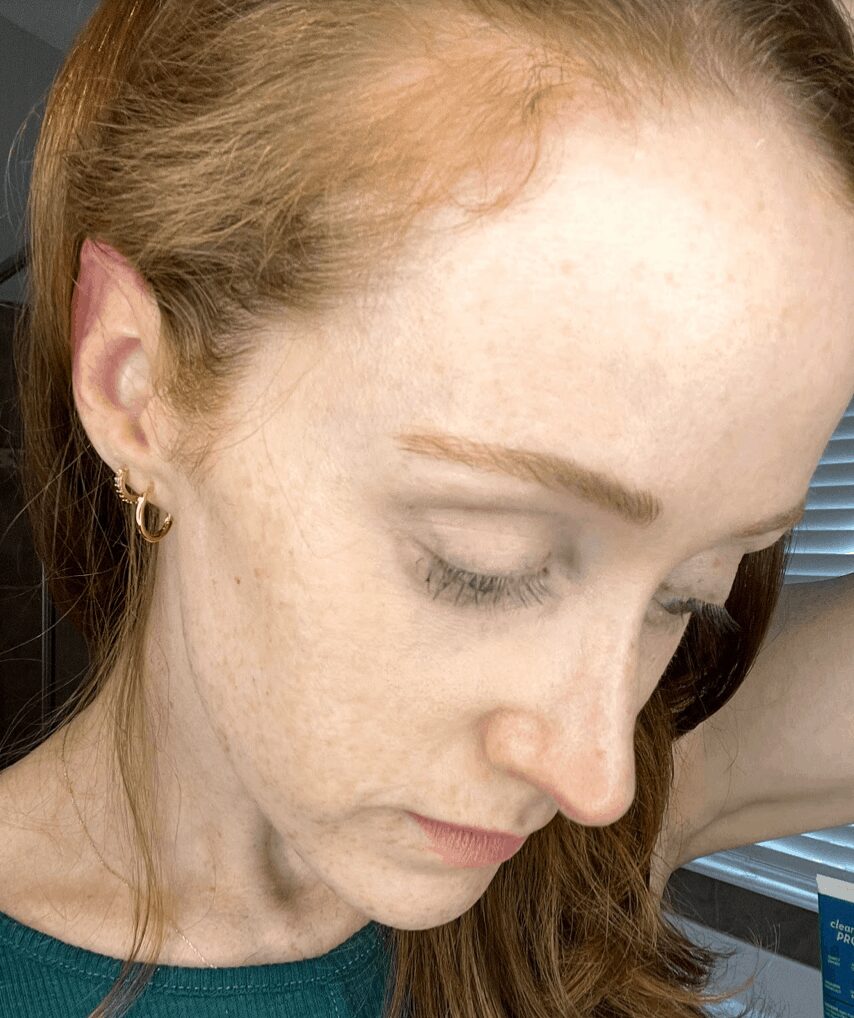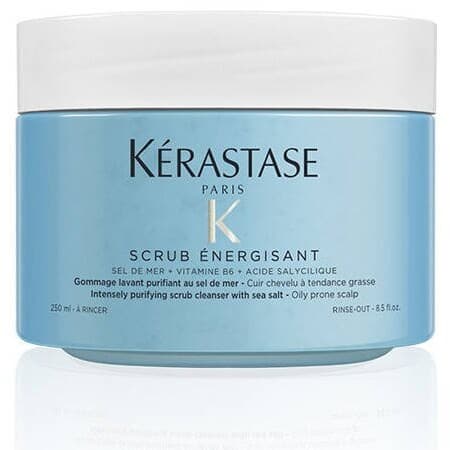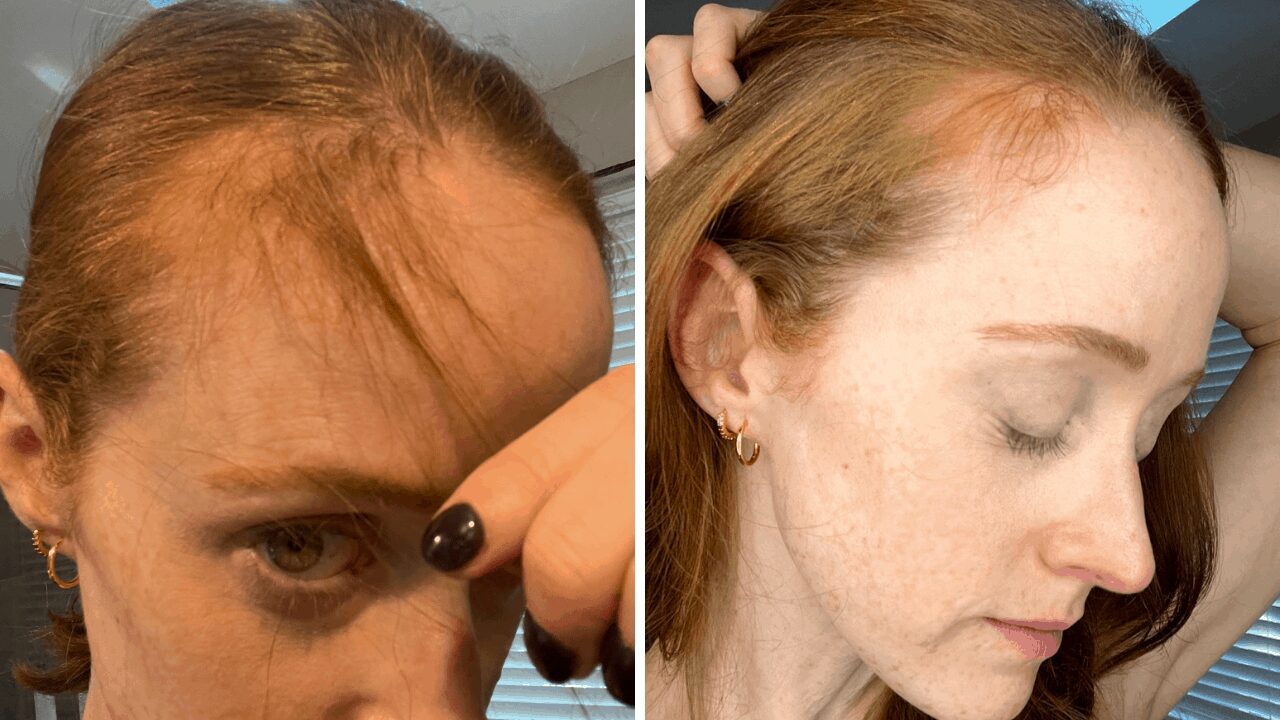It is estimated at least 50% of women will experience some degree of postpartum hair loss. It’s not your imagination and it can be shocking because I personally went from the thickest hair I ever had to hair loss. I absolutely loved my pregnancy hair. It was thick, shiny and healthy. I definitely didn’t realize the extent of ‘postpartum hair loss’ until my son was around 3-months-old –– this is a common time when hair loss occurs. Clumps of hair were coming out of the shower and in my brush. This lasted a few months. Around the time my son was 7-months-old, I started to get baby hairs near my hairline, which I later learned was re-growth.
Now, nine months postpartum, I had the pleasure of speaking with Dr. Michele Green, an NYC-based board-certified dermatologist and mom, about postpartum hair loss and what redheads (or anyone reading) can do in this situation.

When I asked Dr. Green why postpartum hair loss occurs, her response was enlightening, “As the body re-adjusts to its pre-pregnancy phase, there’s often a hormonal imbalance. As the hormones stabilize it can cause increased shedding and no growth. The first sign of postpartum hair loss is shedding. Postpartum hair loss can be seen in as little as three months and up to six months after giving birth.”
If you are experiencing more shedding than normal, scalp irritation or redness, and itchiness, Dr. Green advises you to see your dermatologist as soon as possible.

“During pregnancy, hair stays in the anagen phase longer due to prenatal vitamins* and a surge in estrogen. As a result, hair grows longer and looks fuller during pregnancy. If hair growth was significant during pregnancy, you may experience more hair loss. If there is significant hormonal imbalance post pregnancy there can also be significant hair loss,” says Dr. Green.
And when asked if breast feeding can contribute to hair loss after pregnancy, “It [breastfeeding] can contribute to postpartum hair loss,” says Dr. Green. “However, in general, postpartum hair loss is a result of a drop in hormone levels deficiency in vitamins and minerals can also be a contributing factor.”
Here’s what I personally learned through my postpartum hair loss journey and some wise advice from Dr. Green:
1. It won’t last forever
Postpartum hair loss is normal – and temporary. Most women will return to their usual hair growth cycle between 6 and 12 months after birth
2. Keep up your multi-vitamins* and talk to your doctor
This is important to make sure you’re getting all your nutrients. I took a prenatal vitamin throughout my entire pregnancy and once they were gone, I switched to a multi-vitamin. You can also choose to take biotin.*
D. Green agrees saying, “You can take supplements*, keep hair conditioned and moisturized. Getting a haircut and deep conditioning can be beneficial for postpartum hair loss. In addition, PRP (Platelet Rich Plasma) injections can help accelerate hair growth. PRP is a unique procedure utilizing the protein-rich plasma containing growth factors from your blood to reinject into your scalp to grow your hair.”
3. Get a haircut every 8-12 weeks
Take some time for yourself and get a haircut. Try a new hairstyle or length! This will give your hair opportunity to grow back to its original thickness and will also provide you some much needed pamper time.
4. Treat yourself to a weekly deep conditioner, mask or treatment
Try Bondi Boot Miracle Mask or Color&Co Infuse Replenishing Conditioner, they’re my personal favorites.
Dr. Green recommends:
Olaplex No.7 Bonding Oil: This oil is a lightweight styling oil that dramatically increases shine and softness while strengthening the hair shaft. It is great and can be used on all hair types and textures.

Kérastase Scrub Energisant Purifying Scalp Scrub: This product is all-natural and infused with vitamins, minerals and acids to cater to any scalp issues.

5. Make sure you’re using a sulfate-free shampoo and conditioner
Sulfates can cause harm, damage and all-around unpleasantness for your red hair.
Have you experienced postpartum hair loss?
Rock it like a Redhead!



